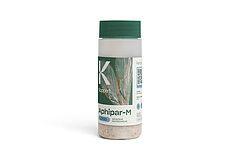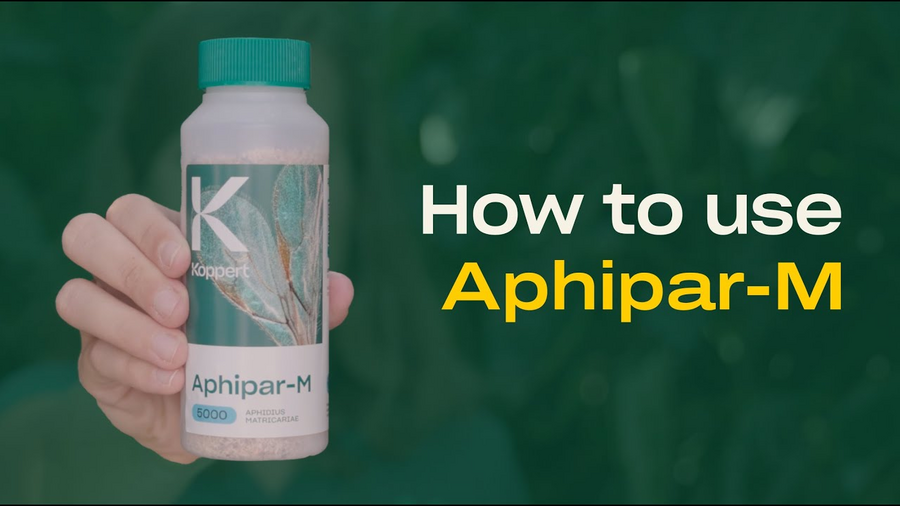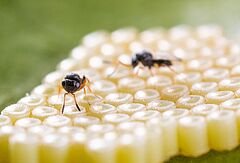Aphid control with the parasitic wasp Aphidius matricariae


Aphidius matricariae is a parasitic wasp belonging to the family Braconidae and is widely recognized for its role in biological pest control of aphids. This small wasp is a valuable natural enemy in both agricultural and horticultural settings. Aphidius matricariae is used for the control of the following pests:
- Myzus spp.
The natural enemy Aphidius matricariae is available at Koppert as Aphipar-M.
Aphidius matricariae products
Best conditions for use Aphidius matricariae
The natural enemy Aphidius matricariae is most effective between 15 and 25°C (59 and 77°F). The effectivity is reduced at temperatures above 28°C/82°F.
How to use Aphidius matricariae
The parasitic wasp Aphidius matricariae is available in a bottle (Aphipar-M).
- Spread the material on rock wool slabs or in Diboxes
- Make sure the material remains dry and is not moved from its introduction site for at least a few days
The dosage of Aphipar-M depends on climate, crop and aphid density and should always be adjusted to the particular situation. Start introduction preventively soon after planting of the crop. Introduction rates typically range from 0.25-4 per m2/release. Releases should be repeated at least 3 times. Consult a Koppert advisor or a recognized distributor of Koppert products for advice on the best strategy for your situation.
Behaviour of the parasitic wasp Aphidius matricariae
Aphidius matricariae is a notable parasitoid wasp with a distinctive feeding behavior that targets aphids. After the female wasp lays her eggs inside an aphid, the larvae hatch and begin to feed internally. They use their specialized mouthparts to penetrate the aphid’s body and siphon off its nutrients, effectively consuming the host from within. This feeding strategy is highly efficient, allowing the larvae to develop and grow while depleting the aphid population. The larvae are adept at adjusting their feeding rates based on aphid density, optimizing their predatory impact in areas with high aphid concentrations. In this way, Aphidius matricariae plays a crucial role in controlling aphid infestations and reducing the need for chemical interventions in agriculture. Adult wasps do not engage in feeding on aphids, but primarily subsist on nectar and water.
Life cycle and appearance of Aphidius matricariae
Adults are 3-4 mm golden brown wasps with long antennae. Characteristic for the distinction of the species are the fine stripes on side parts of the wasp waist. Aphidius matricariae is specific to aphids of the family Aphididae. Most species belong to the genera Myzus, Aphis, Ovatus, Rhopalosiphum and Sitobion. The biology of Aphidius matricariae closely resembles that of Aphidius colemani.














